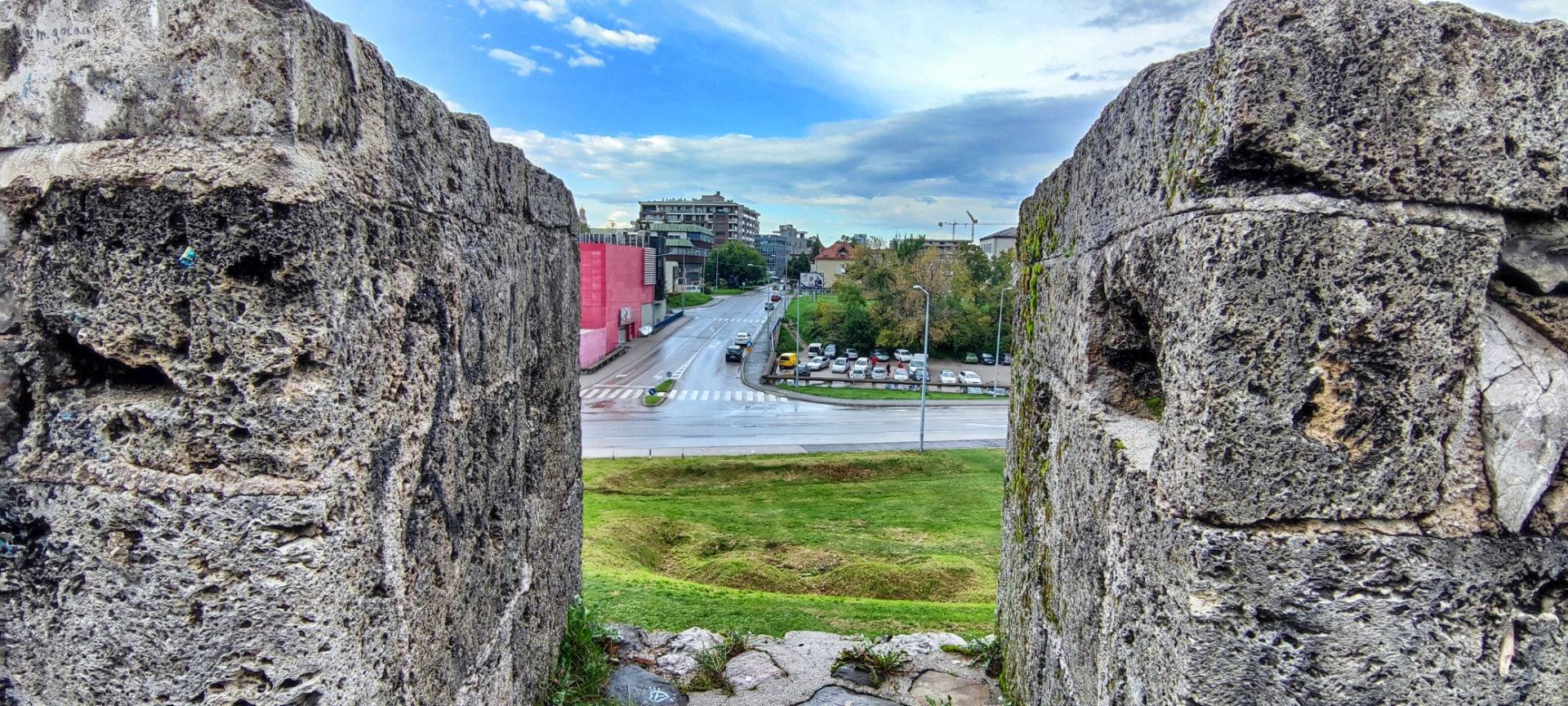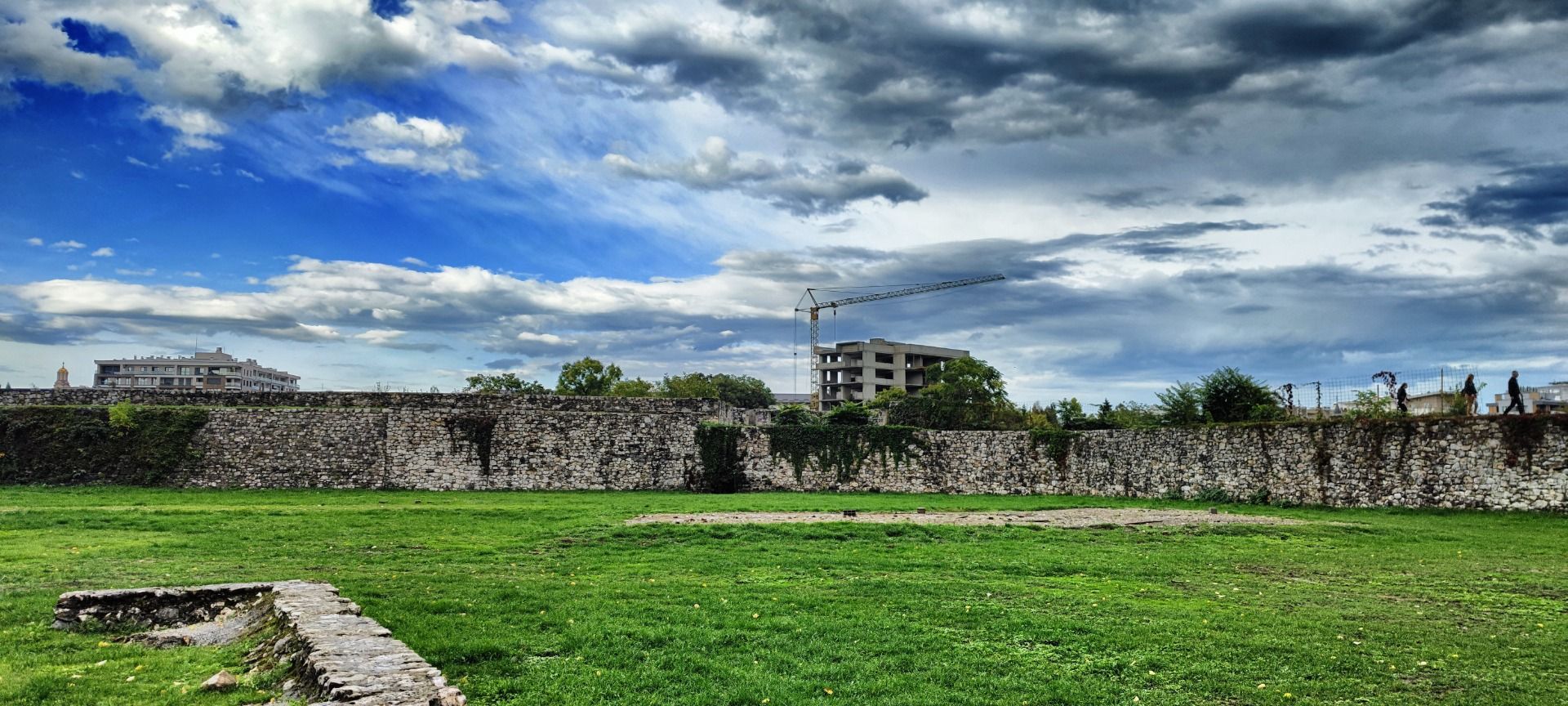Welcome to Banja Luka, where history comes alive at the majestic Fortress Kastel. Join me on a journey through time as we explore the rich heritage and captivating stories that this ancient fortress holds. From Roman origins to Ottoman rule, and its transformation into a vibrant cultural hub, Fortress Banja Luka is a must-visit destination for travelers seeking adventure and historical intrigue.

The Guardian of Banja Luka
In the heart of the city of Banja Luka, stands a formidable structure that has witnessed centuries of history and holds the key to unlocking the secrets of this enchanting destination. Welcome to Fortress Kastel, the guardian of Banja Luka.

Located in the center of Banja Luka, this ancient fortress is steeped in a rich tapestry of tales from battles fought to trades conducted within its walls. With its origins dating back to the Roman Empire, Kastel's foundations have stood strong through countless transformations over time. While there are few clues as to its exact builders, archaeological evidence suggests that it may have served as a Roman fort.

Unraveling History at Kastel
Roman Origins: Traces from the Past
As we step into Kastel, we are transported back in time to when mighty empires ruled these lands. The presence of Roman artifacts and structures within the fortress speaks volumes about its early beginnings. Archaeological finds such as bronze coins, weapons, and remnants of ancient buildings further reinforce this connection with ancient Rome.

Medieval Turmoil: Destruction and Rebirth
The turbulent medieval period brought about significant changes for Kastel and Banja Luka as a whole. With an influx of Slavic peoples during the 5th to 12th centuries came destruction and subsequent reconstruction. Unfortunately, such movements often led to devastation. The original Castra was destroyed during these times, giving rise to today's incarnation - Kastel.

Ottoman Era: A New Chapter Begins
Banja Luka fell under Ottoman rule for approximately three centuries starting from the Middle Ages. This period marked yet another chapter in Kastel's history as it became an important military base for various conquerors who sought control over these lands. However, like all things in life, change was inevitable.

The Austro-Hungarian Influence
With the Austrians conquering Banja Luka, a new era dawned upon Kastel. The city was handed over to the Hungarians and their king due to their alliance with Hungary and Austria. In 1494, Banja Luka was officially mentioned by name in the charter of Hungarian king Wladyslaw II Jegiellon. This period saw intense conflicts as different countries vied for control over this strategic area.

The 17th and 18th centuries brought about renovations, strengthening, and expansion of Kastel as Ottoman-Austrian wars loomed on the horizon. The fortress took on a trapezoidal shape with eight bastions, six towers, and underground passages known as catacombs. However, as time marched forward into the 19th century, parts of the fortress suffered destruction.
Renovation and Expansion in the 19th Century
As the 19th century rolled in, Fortress Kastel underwent a period of renovation, expansion, and transformation. The fortress was no longer a military stronghold but began to embrace its potential as a cultural haven.

During this time, significant efforts were made to restore and strengthen the castle after years of neglect. The trapezoidal shape of the fortress was reinforced with extensive renovations that included eight bastions, six towers, and several underground passages known as catacombs. These additions not only enhanced its defensive capabilities but also added to its architectural grandeur.

The Austro-Hungarian influence brought about a newfound appreciation for aesthetics and functionality. The castle's strategic location on the banks of the Vrbas River made it an ideal spot for cultural events and gatherings. It became a symbol of Banja Luka's rich history and heritage.
From Military Base to Cultural Haven
Over time, Fortress Kastel transitioned from being solely a military base into a vibrant cultural hub that attracts visitors from near and far. Today, it stands as a testament to Banja Luka's resilience and determination to preserve its past while embracing modernity.
The large green meadow within the fortress walls has become an open-air venue for various events throughout the year. In summer especially, musicians take center stage with rock concerts filling the air with electrifying energy. The acoustics within these ancient walls create an unforgettable experience for both performers and attendees alike.

Sports competitions also find their place within Kastel's grounds. Water sports enthusiasts gather along the Vrbas River where kayaking championships have taken place in recent years. Stand-up paddling has become particularly popular among locals who take full advantage of their natural surroundings.

Exploring Kastel today offers visitors an opportunity to immerse themselves in history while enjoying contemporary entertainment options. Walking through its corridors evokes images of the past, as remnants of ancient buildings and artifacts serve as a reminder of the fortress's storied past.
As you wander through the complex, you'll encounter various structures that have stood the test of time. The central warehouse with its two towers and small arsenal showcases the castle's military heritage. The central armory and stone building provide insights into daily life within these walls centuries ago.

The layout of Kastel is a testament to meticulous planning and design. Walls divide different interior spaces, creating distinct areas for exploration. Thanks to extensive research and documentation, we now have a comprehensive understanding of how this fortress evolved over time.
Fortress Banja Luka has truly transformed from its origins as a military stronghold into an enchanting cultural haven. It stands proudly today, welcoming visitors to delve into its fascinating history while enjoying the vibrant events that breathe life into its ancient walls.

Exploring Kastel Today
Stepping into the grounds of Fortress Banja Luka is like stepping back in time while embracing the present. As you explore Kastel today, you'll find a myriad of experiences waiting to be discovered.

The large green meadow at the heart of the fortress serves as a gathering place for locals and visitors alike. It's here that you can witness lively concerts under an open sky, with music resonating through the ancient walls. The atmosphere is electric, creating memories that will last a lifetime.
For sports enthusiasts, Kastel offers opportunities to engage with nature and test your skills on the Vrbas River. Join in on kayaking or canoeing adventures, or perhaps try your hand at stand-up paddling – a favorite pastime among locals who have mastered this unique water sport.

As you wander through the complex, take note of the various buildings that dot its landscape. The central warehouse stands tall with its two towers and small arsenal, providing glimpses into the castle's military past. The central armory and stone building offer insights into daily life within these historic walls.
One cannot help but admire the architectural layout of Kastel. Walls divide different interior spaces, creating pockets of exploration throughout this vast complex. Each corner holds secrets waiting to be discovered – from hidden passages to remnants of ancient structures.
The Secrets Within: Architecture and Layout
Fortress Banja Luka reveals its secrets through its architecture and layout. As you delve deeper into its corridors, it becomes evident that every stone has a story to tell.

Careful planning and design are evident in each aspect of Kastel's construction. From strategic positioning along the Vrbas River to defensive features such as bastions and towers, every element served a purpose during different eras in history.

The intricate network of catacombs beneath Fortress Banja Luka adds an air of mystery to this already captivating site. These underground passages were once used for various purposes, and today they offer a glimpse into the past.

Archaeological finds within the fortress have shed light on its evolution over time. From Palaeolithic tools to Late Antique bronzes and ceramics, each discovery adds another layer to the story of Kastel.

As you explore Fortress Banja Luka, take a moment to appreciate the craftsmanship that went into its construction. Marvel at the walls that have withstood centuries of change and witness firsthand how this fortress has transformed from a military base to a cultural haven.
Saying Goodbye to Fortress Banja Luka: My Travel Takeaways
As my journey through Fortress Banja Luka comes to an end, I am left with lasting impressions of this remarkable destination. The rich history embedded within these ancient walls is awe-inspiring, taking visitors on a captivating journey through time.

From its Roman origins and turbulent medieval past to Ottoman rule and Austro-Hungarian influence, every chapter in Kastel's story has shaped it into what it is today – a vibrant cultural hub that embraces both tradition and modernity.
I encourage you all to embark on your own adventure in Fortress Banja Luka. Explore its hidden corners, immerse yourself in its events, and let the echoes of history guide your footsteps. Whether you're a backpacker seeking new experiences or a digital nomad looking for inspiration amidst ancient ruins, Kastel offers something truly special.

So pack your bags, grab your camera or sketchbook, and make your way to Fortress Banja Luka – where history meets contemporary allure. Unveil the mysteries that lie within these stone walls and create memories that will last a lifetime.
Thank you for reading and if you like my work please follow me on Hive, Travelfeed or Steem or visit my homepage koenau.de


